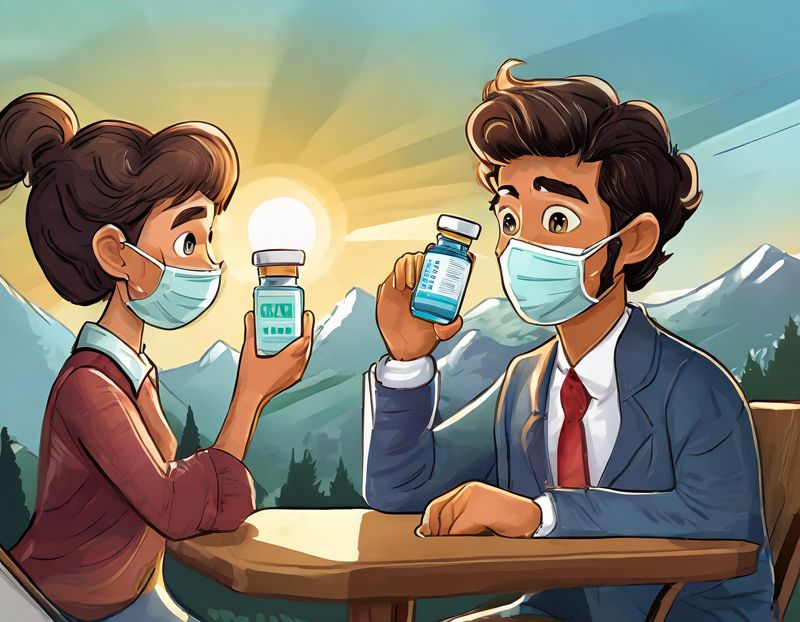FLiRT-ing With COVID – How Safe Are We?
COVID-19 took the world by storm in 2020, but luckily we got a vaccine to help take it out. A new KP.2 subvariant of COVID-19 is showing its immunity prowess, with the ability to surge in infections this summer.
In a media briefing on May 24th, hosted by Ethnic Media Services, a panel of experts discuss the new COVID-19 variant, focusing on the symptoms and what to do.
Speakers
![]()
- Dr. Maurice Pitesky, Associate Professor, with a research focus on highly pathogenic avian influenza disease modeling, UC Davis School of Veterinary Medicine
- Dr. Peter Chin Hong, Professor of Medicine and Director of the immunocompromised host infectious diseases program, UCSF
- Dr. Benjamin Neuman, Professor of Biology, Texas A&M University
Virologist Dr. Benjamin Neuman emphasizes the severity of this variant. “his is one of the more aggressive versions of the virus that we have ever seen,” Neuman said. “This is at the top of the scale in terms of immune resistance, which means that it will almost certainly be able to infect people, even if they have been recently vaccinated.”
Despite this, Neuman insists that vaccinations remain the best way to prevent severe outcomes from COVID-19.
The FLiRT Subvariant and Current Reporting
Hospitals aren’t required to report COVID-19 hospitalizations anymore. KP.2, a member of the FLiRT lineage within the Omicron variant, currently represents about one-third of COVID infections, according to CDC.
Symptoms, which include a runny nose, sore throat, headache, fever, cough, and body aches, are similar to those caused by other subvariants. The CDC has adjusted its isolation recommendations, advising people to stay home until they are fever-free rather than the previous five-day isolation period.
Neuman highlighted the lag in vaccine updates relative to the rapid evolution of COVID-19 variants. The FDA was expected to discuss KP.2 last week but has delayed the meeting until July. This discussion will help determine which subvariants to base the next vaccine on, a rollout planned for next September.
COVID Vaccine Updates and Home Testing Concerns
Neuman advocates for biannual vaccine boosters to better prevent infections, although current plans lean toward an annual vaccination, timed around the back-to-school period and winter season.
“When we know that this is a virus that occurs sporadically, and peaks at different times throughout the year, every year. It’s essentially unpredictable. We’re treating COVID as if it were flu, even though it’s very much not,” Neuman stated.
He also raised concerns about the effectiveness of home test kits, noting that they may not be as reliable for detecting the latest subvariants. “They are likely out of date. And so that means that they may miss some of the time. But the tests work based on detecting parts of the virus that have not been changing very much in the recent evolution. So in theory, they would still work effectively,” Neuman explained.
Anticipating a Summer Surge
Dr. Peter Chin-Hong expects a rise in COVID infections this summer. “As more people get infected with the new variants, it will just be easier to get in a more vulnerable state. And because of the low vaccination rate and low uptake of Paxlovid, I’m worried that we’ll get a swell in hospitalizations.”
The US has seen COVID surges for four consecutive summers. As temperatures rise, people tend to gather indoors without masks, increasing transmission.
Urgent Call for Vaccination and Mask Use
Chin-Hong believes the upcoming surge will not overwhelm hospitals as in previous years, largely due to timely indicators like wastewater analysis.
“We need to encourage particularly those who are vulnerable and especially if they didn’t get a vaccine last year to please go ahead and get it. And if you don’t want to get a vaccine, make sure you know how to get access to early therapy if you get COVID.”
He also stressed the importance of mask-wearing for any respiratory illness and highlighted the need for continued vigilance. “Emerging threats will continue our lifetimes. And we have to keep our efforts laser focused on protecting all parts of our society, especially the vulnerable,” Chin-Hong concluded.


